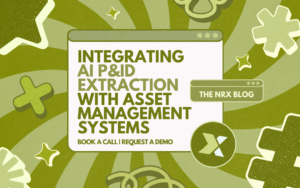A report from the U.S. Department of Energy reveals that preventative maintenance can reduce equipment failures by as much as 70%. This substantial impact underscores the importance of strategic maintenance in enhancing asset reliability. In industries where uptime is directly tied to revenue, improving reliability through proactive care becomes a clear competitive advantage.

Defining Preventative Maintenance and Asset Reliability
Preventative maintenance refers to scheduled actions aimed at preventing equipment degradation before a breakdown occurs. It contrasts with reactive maintenance, which involves repairing assets after failure. By proactively addressing minor wear or early-stage faults, organizations can extend equipment life and improve operational performance. Asset reliability, in turn, is the ability of an asset to perform its required function under stated conditions for a specific period. It reflects how consistently equipment delivers value without interruption. Preventative maintenance is one of the most effective ways to increase this reliability.
The Cost of Poor Reliability
Unreliable assets lead to more than just production losses. In critical industries such as healthcare, utilities, or aerospace, asset failure can have life-threatening or financially catastrophic consequences. By focusing on early intervention, preventative maintenance helps avoid these risks. More importantly, it supports consistency in production and improves long-term budgeting for maintenance.

Smarter PM Reduces Waste and Improves Focus
Traditional preventative maintenance often follows rigid time intervals. While this approach is better than none, it can lead to over-servicing. Some components might be replaced prematurely, while others degrade unexpectedly. Smarter PM strategies use data on runtime, environmental exposure, and stress loads to adjust maintenance frequencies. These strategies reduce unnecessary interventions and redirect labour to assets that truly need attention.
Cultural Shifts and Collaboration Matter
Transitioning to smarter preventative maintenance requires more than just software. It involves a cultural change. Maintenance teams must learn to interpret asset data and collaborate with engineering and operations to prioritize high-risk areas. Cross-functional meetings and shared KPIs help align goals and reinforce the importance of reliability as a company-wide priority. When everyone understands how their role impacts asset performance, it becomes easier to build a proactive maintenance culture.
Conclusion
Preventative maintenance is a powerful strategy for improving asset reliability, but its value increases significantly when made smarter through data and collaboration. By focusing on precision, leveraging technology, and fostering a culture of proactive maintenance, organizations position themselves for long-term operational success.
Integrating AI P&ID Extraction with Asset Management Systems
ISO 14224 vs Other Maintenance Standards: What Sets It Apart?
Building Trust in Your Asset Data: Strategies for Governance
Share this article




